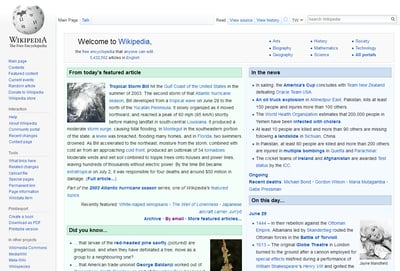Index Content
A content audit is a process of analysis and review of the published content. It serves to improve the marketing strategy by carrying out a systematic evaluation of the company's activity. Its optimisation improves the positioning on the internet as it can detect internal (onpage) or external (offpage) factors that may be affecting the performance of the website. It will detect the weaknesses and strengths of the blog or brand's website. Thus, a complete picture of the performance of the content will be obtained and it will be known what the critical needs are or how to act in future campaigns, among others.
Three elements are important to carry out this analysis: usability, optimisation and security. Gathering information on these aspects will help to increase website traffic, conversions and profitability. This process is recommended when a sudden drop in traffic or an unexpected increase is observed, as it will help to know the cause of these behaviours. The content strategy is essential to get the audience to connect and interact with the website. Therefore, gathering useful information to define the marketing actions that succeed among users will be key for a brand to succeed.
Objectives of the content audit
- Improve SEO positioning.
- To know what content is successful among the audience.
- Organise and store content.
- Recycle functional content.
- Discard outdated content.
- Analyse conversion rates and web traffic.
- Optimise content strategy.
why should you incorporate content auditing into your strategy?
The content audit offers an evaluation of the state of the website from the perspective of SEO positioning and content. It will show us which pages are working properly and which ones need improvement. By revealing the strengths and needs, the marketing plan can be adjusted to the real needs of the company. Some of the reasons why you should incorporate the content audit into your marketing strategy are:
- Review web semantics: From the deeper perspective of the analysis, you can know the keywords that work in your content and, therefore, with which you should position yourself. The use of synonyms or concepts similar to the keywords will provide greater value to your website, as well as the inclusion of these in titles and descriptions.
- Optimise visual elements: The images that accompany your publication can also be improved through the ALT tag or alternative text. The content audit will analyse their recognition in search engines.
- Evaluate the hierarchy of headings: By analysing the content you will detect whether the HTML tags (h1, h2, h3 or others) are being used correctly.
Types of content audits
- On Page Audit: This analyses the factors that affect the positioning of a website, including visual elements, page structure, links and keywords, among others.

- Off Page Audit: It deals with the data that belong to actions external to the website: linkbuilding.
- SEO Audit: This is an audit that requires specialised knowledge of technical SEO and focuses on correcting aspects such as web loading, adaptability, sitemaps and indexing.
- UX Audit: It studies the user's experience by evaluating the elements that affect their visit to the website, correcting factors such as design, CTAs, adaptability or invasive advertising.
what content does a content audit take into account?
Depending on the type of audit, some contents will be taken into account, but the most commonly analysed ones are:
- Main page: This is the home page, the first thing the user sees when the browser is loaded.
- Landing pages: It can also be called landing page. It is located within the website and aims to achieve the conversion of users to leads.
- Category page: It is the home page of a certain category, through which the subcategories of the website are linked.
- Descriptions: These are placed to position the website in search engines and serve to summarise the content of a page.
- Brand blog: They improve the visibility of the brand on the Internet by communicating news or providing valuable information to visitors.
- Emails: Email marketing should be analysed to improve its quality by adapting the message to each user and checking if the selected marketing actions are the right ones.
- Ebooks: These are popular formats in inbound marketing in which information is offered to the user in exchange for their data. Therefore, they must be correctly optimised and of value to the customer.
- Social media: Analysis of social media profiles, conversations and competitors will help to realign your social marketing strategy and increase traffic to your website.
How to do a content audit
1. Define your objectives
To create a content audit it is necessary to know the current objectives of your company. That is, to know the benefits that you want to obtain or the results that you want to achieve. These can be:
- Improve SEO: Identify functional pages, analyse the content and check if the links are working properly.
- Build loyalty: Optimise your content to maintain the loyalty of your audience.
- Increase conversion rate: Give importance to the user experience and generate more leads.
2. Select metrics
Based on your objectives, you should choose the right metrics, such as SEO, user behaviour, interactions or sales.
3. Create an inventory
In order to carry out an audit, you must have an inventory that organises and brings together the content. The first step is to compile the URLs of your website based on your sitemap. This can be done with different tools, for example, those provided by the Semrush platform. The second step is to catalogue the content of the URLs. This can be classified into different categories depending on the path of purchase, typology or format, among others. After this, it is convenient to create a spreadsheet with the catalogued URLs and their metrics.
4. Collect and analyse the data
Data collection can be done using a content auditing tool, after which accounts should be connected to analytics tools such as Google Analytics, ContentWRX Audit or Content Square to obtain the results.
5. Interpret the data obtained
By examining the content metrics as a whole the data should be interpreted. The stages of the buyer's journey will be taken into account as depending on where you are there may be more traffic, less conversion rate or vice versa. Based on this the content will be maintained, removed or updated.
6. Act
After interpreting the data, a marketing plan focused on improving your actions will be made, incorporating new actions such as adding audiovisual elements, optimising metadata, fixing internal links, improving CTAs, etc.
Tools for content auditing
- Ubersuggest: This platform is useful to improve SEO. It helps to know how a website works by entering a URL. It offers a free overview of a brand's website.
- HubSpot: HubSpot's CMS identifies the strengths and weaknesses of the brand to optimise the digital marketing strategy. It serves to improve the organic positioning of a website through opportunities for improvement.
- Google Analytics: Serves as a tool to obtain data on the performance of content and user interaction with the website, providing detailed graphs on the activity of marketing actions.





